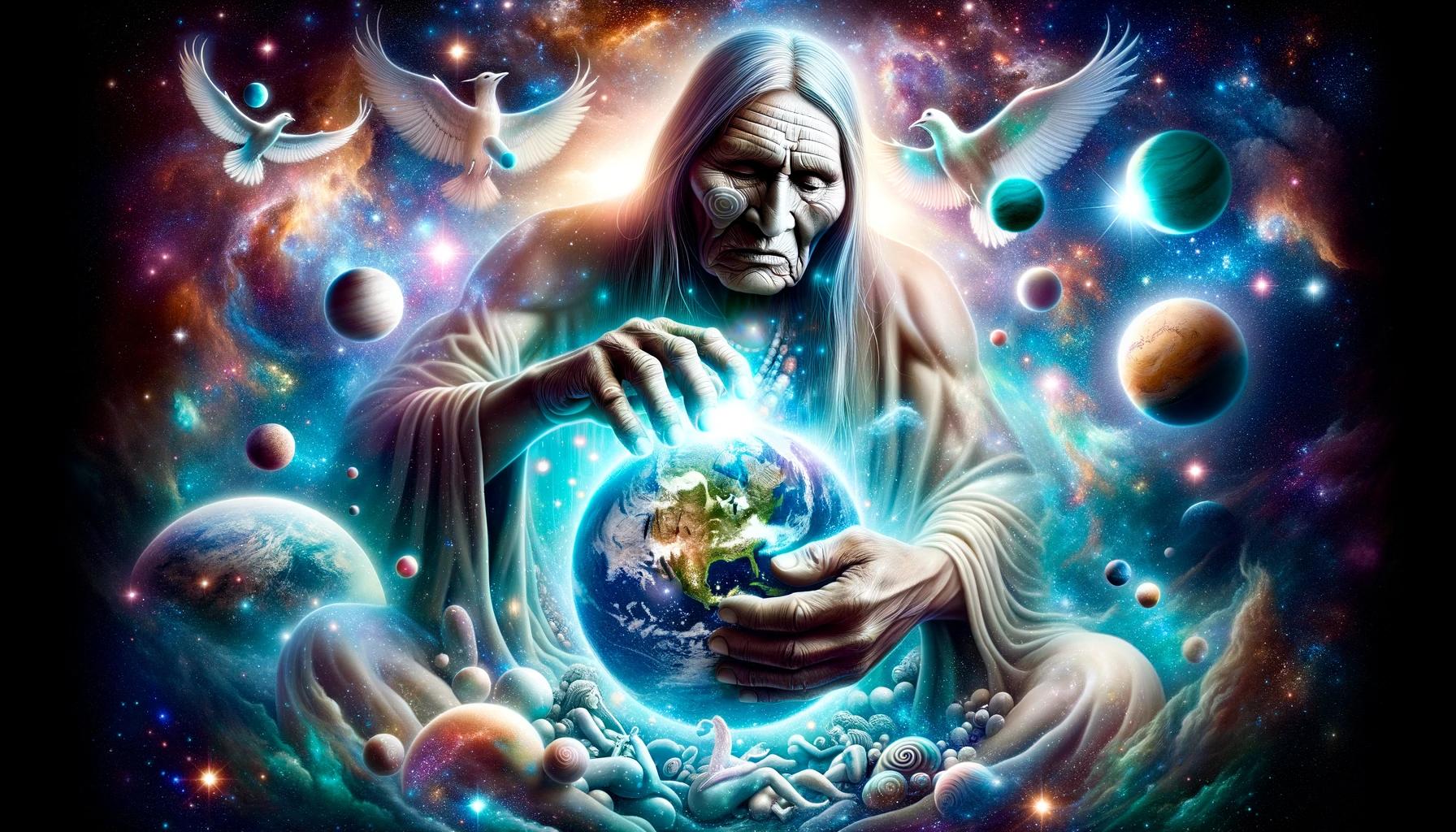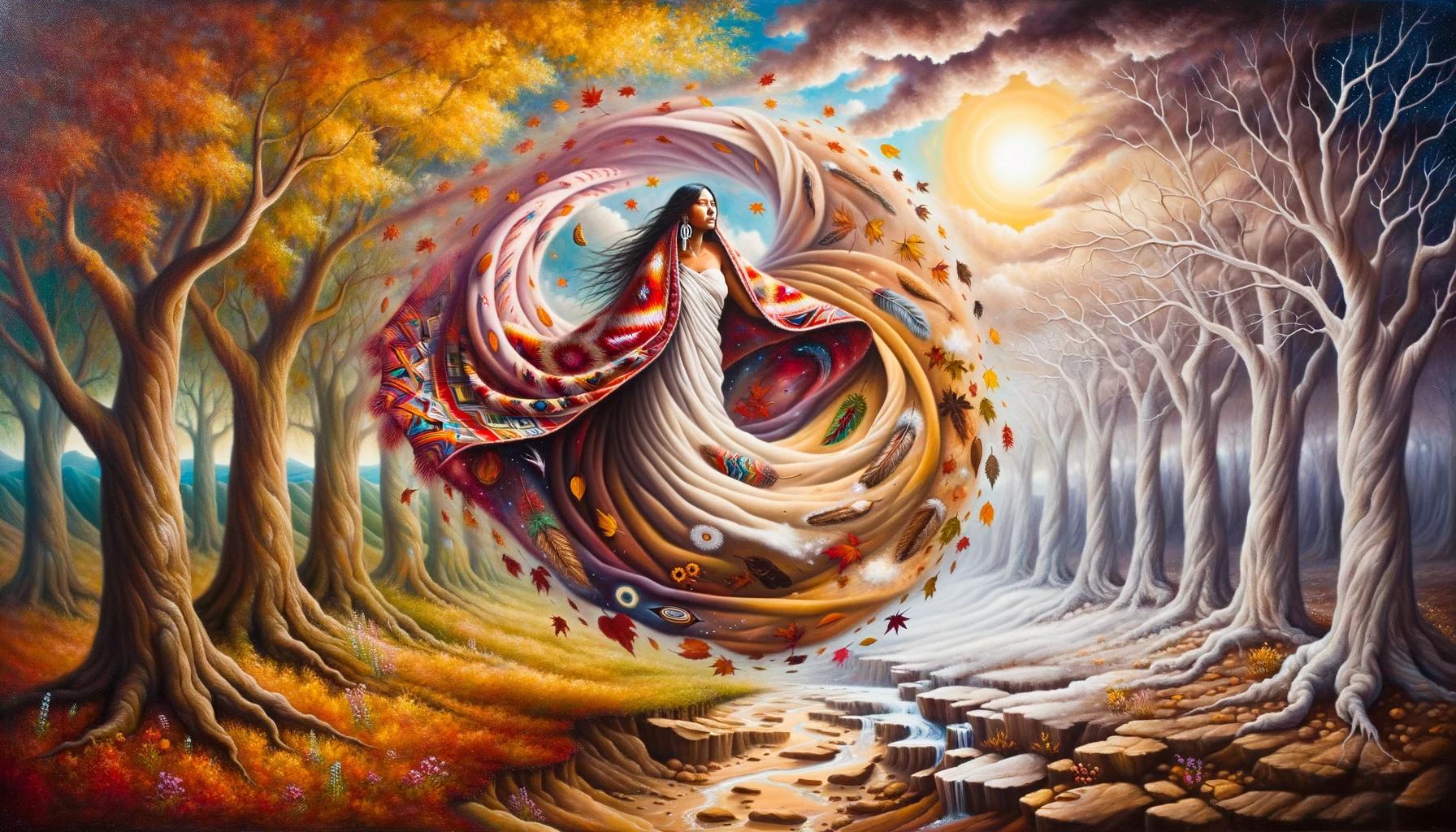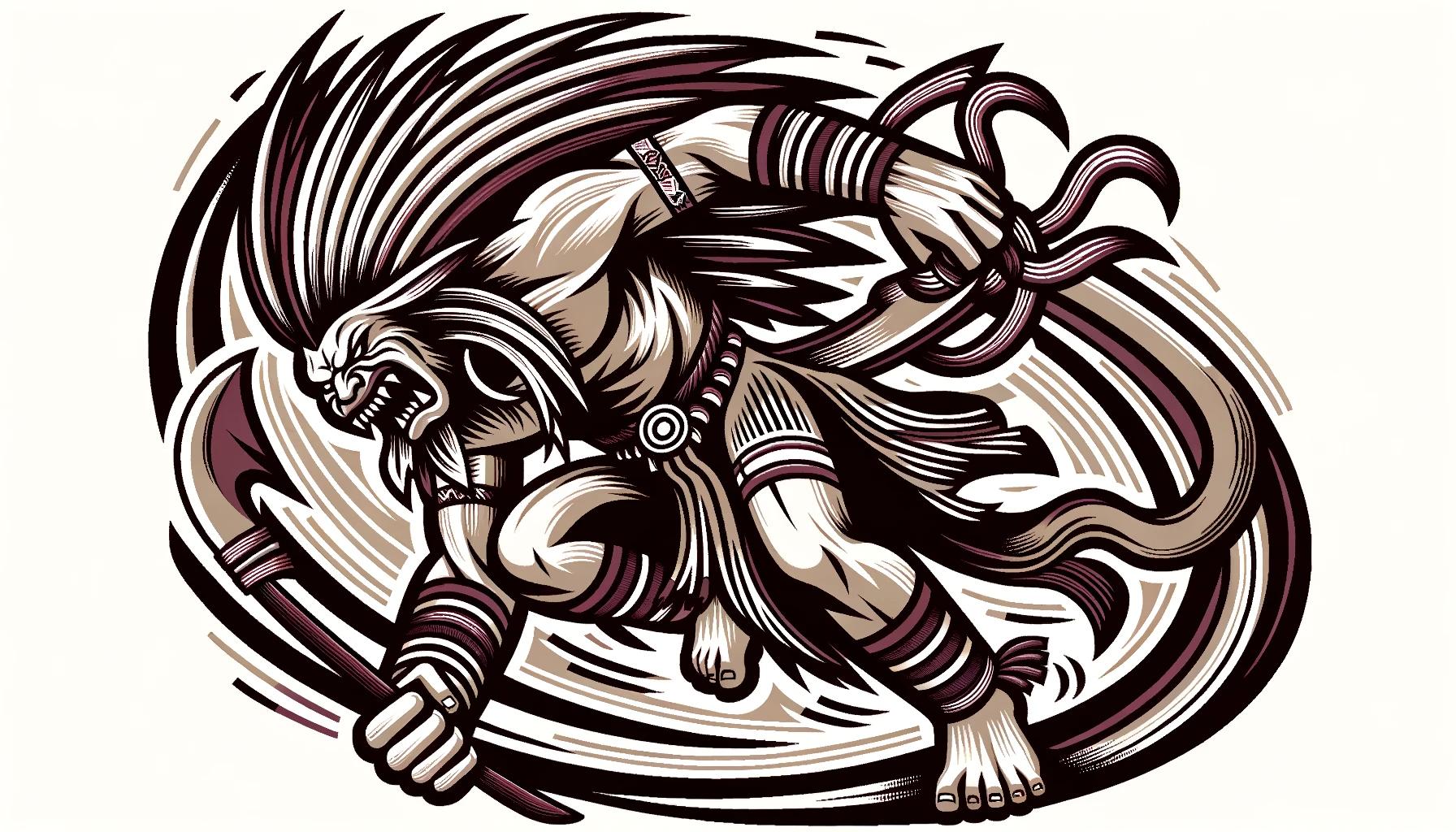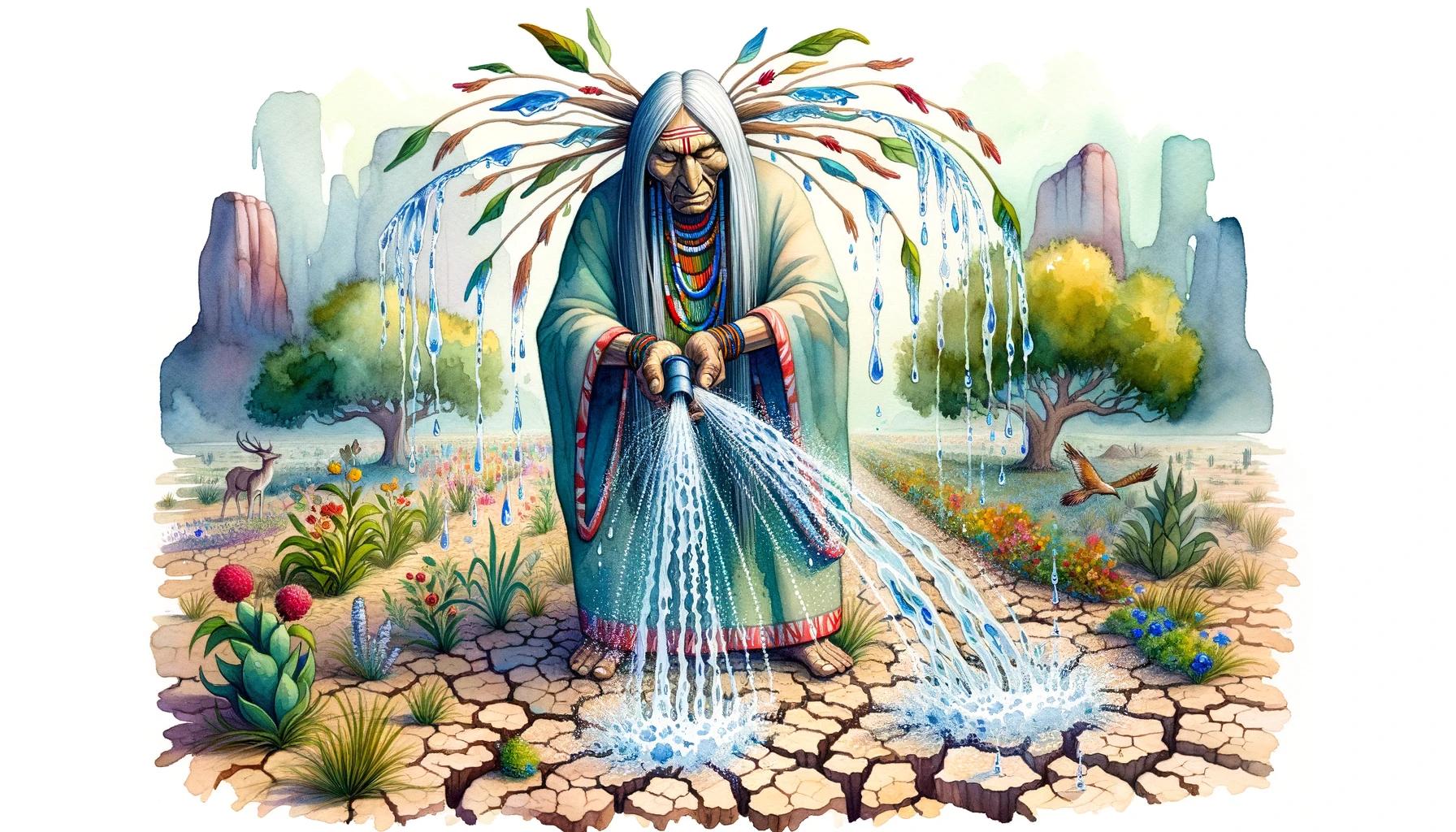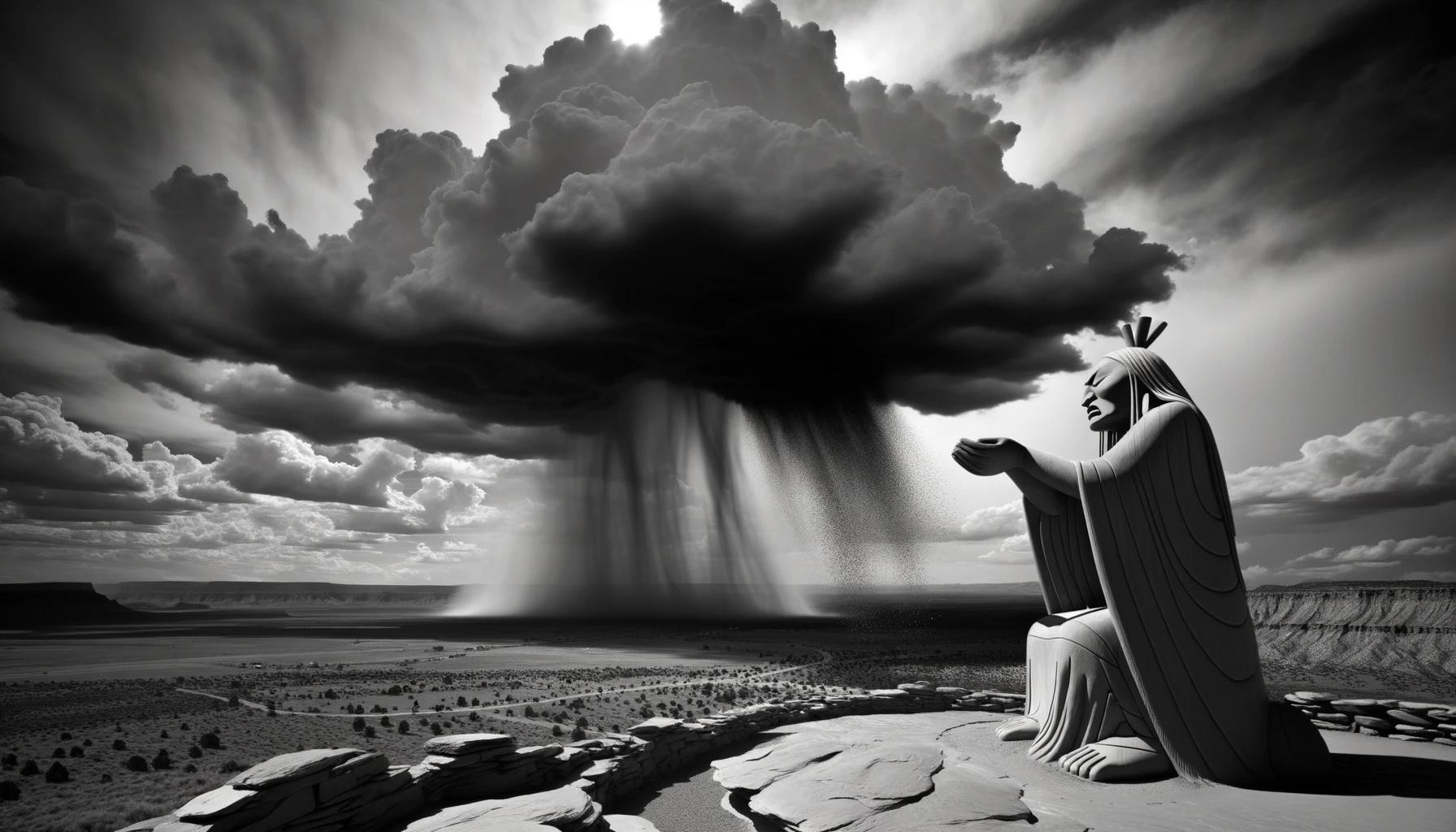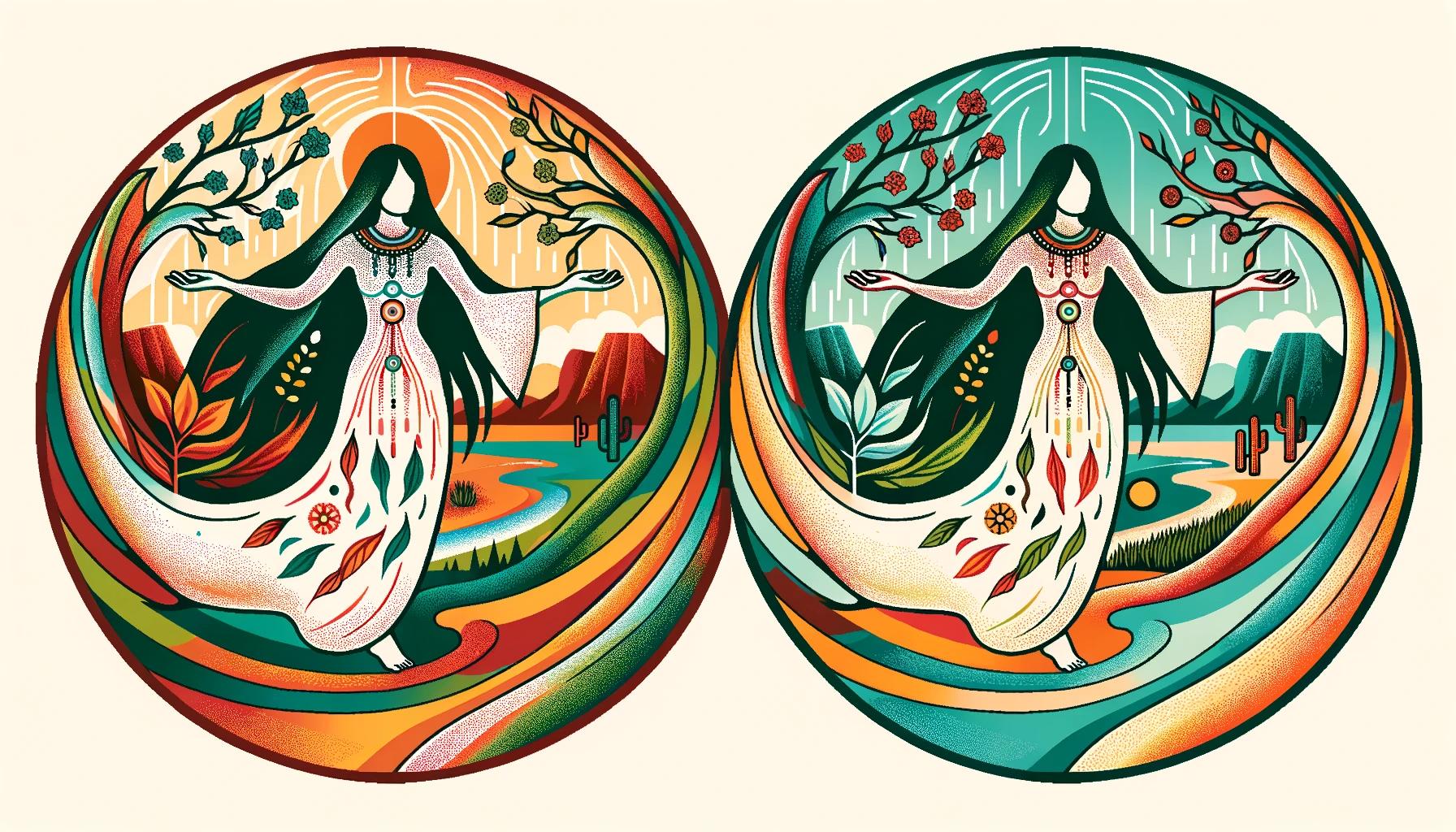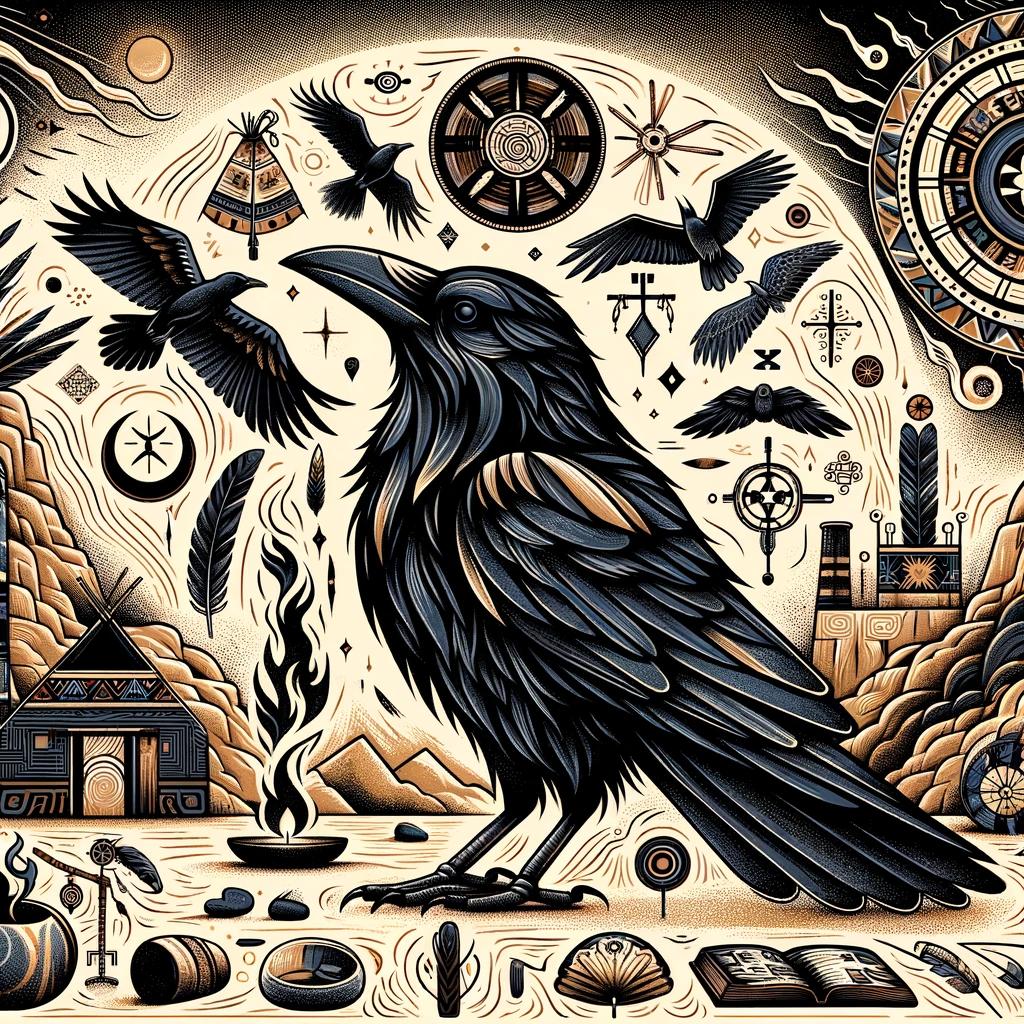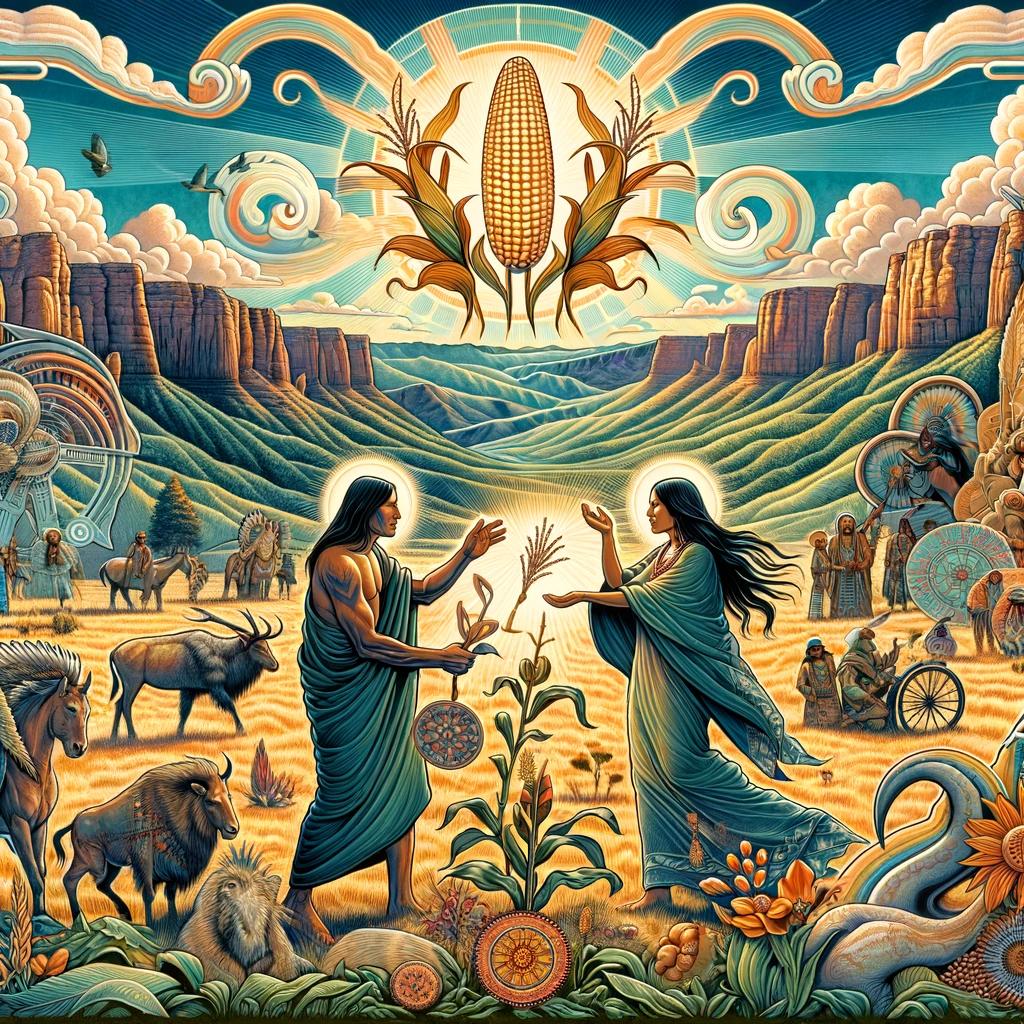Begochiddy Navajo: A Sacred Guide to the Navajo Creation Story
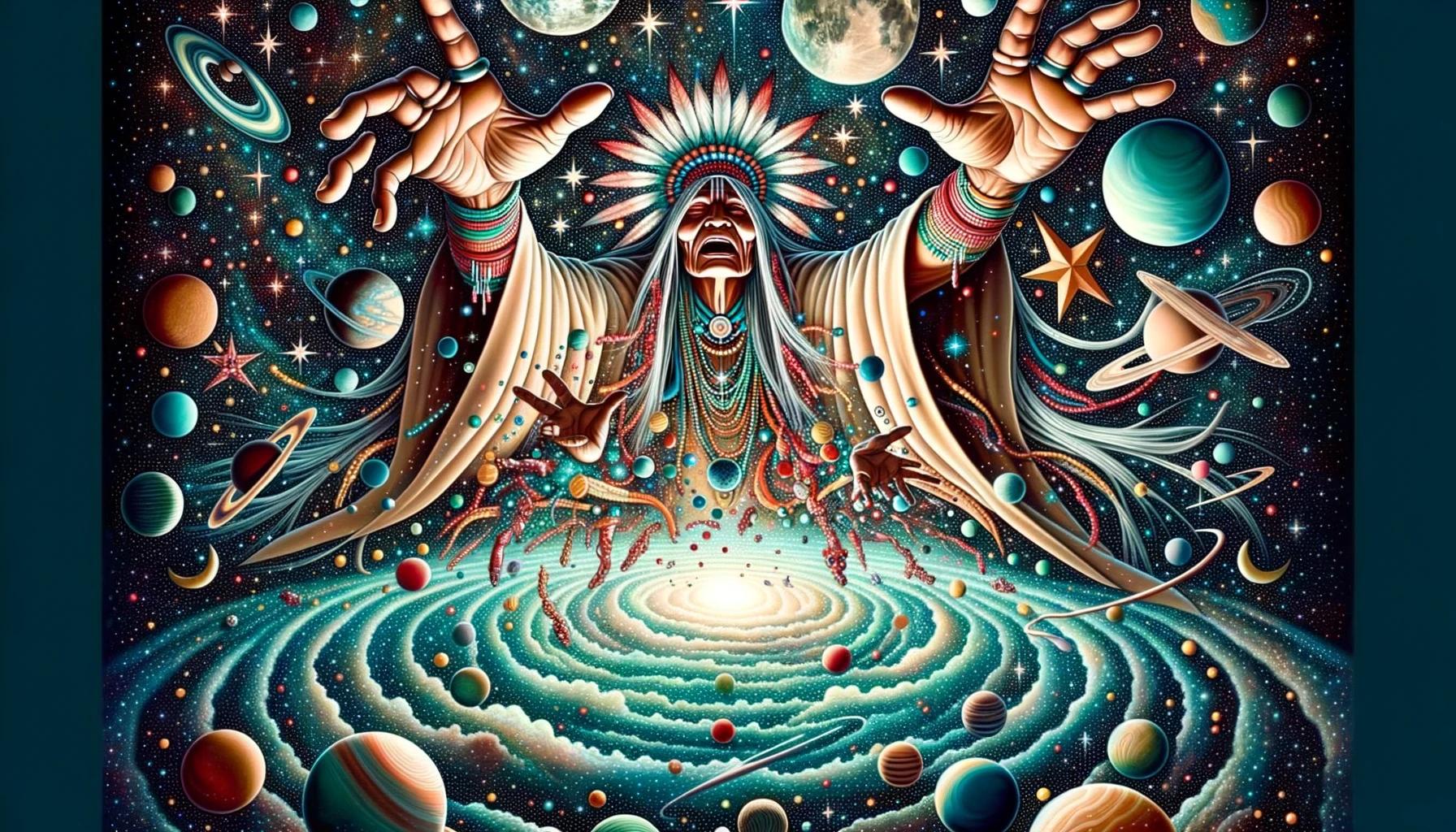
The Navajo creation story revolves around Begochiddy, who played a crucial role in shaping the First, Second, Third, and Fourth Worlds. In the First World, beings emerged from a giant reed, and Begochiddy created mountains, plants, and waters.
In the Second World, he transplanted these elements and created symbolic elements such as red grass, yellow rabbits, and a water bearer. The Third World featured central and surrounding mountains, including Tsilth-tla-del-tai.
The Fourth World saw the birth of man and balance among the elements. Begochiddy’s legacy continues to influence Navajo culture, ceremonies, and rituals today.
The First World: Emergence and Transformation
The First World in the Navajo creation story is a realm of profound emergence and transformation. This world witnessed the birth of the very first beings from the sacred reed, an event that set the stage for the creation of life as we know it.
Let’s explore the different aspects of this captivating world.
The Emergence of the First Beings from the Reed
At the beginning of creation, the first beings emerged from the giant reed, symbolizing the birth of life itself. These beings embodied the essence of existence and marked the dawn of a new era.
They carried within them the potential for growth, adaptation, and harmony with the natural world.
Begochiddy’s Role in Shaping the First World
Begochiddy, a divine figure in the Navajo tradition, played a significant role in shaping the First World. With great wisdom and power, Begochiddy orchestrated the creation of majestic mountains, lush plants, and life-giving waters.
His guidance and creative prowess shaped the landscape of this world, forming a harmonious environment for the first beings to thrive.
The Creation of the Mountains, Plants, and Waters
As part of his divine work, Begochiddy crafted towering mountains that stood as pillars of strength and spiritual significance in the First World. These mountains served as crucial landmarks, offering orientation and a deep connection to the sacred.
Furthermore, Begochiddy brought forth an abundance of diverse plants, each with its unique qualities and purposes, adding beauty and sustenance to the world. The flowing waters, carefully sculpted by Begochiddy, provided nourishment and serenity, giving life to all living beings.
The Mysterious Hollow Reed and Hashjeshjin’s Closing
Within this vibrant world, Begochiddy discovered a mysterious hollow reed, which held unimaginable secrets. Recognizing its profound power, Begochiddy withdrew the reed, leading to a significant transformation. Hashjeshjin, another divine being, closed the hole left by the reed by blowing into it, sealing off the connection between the worlds.
This act marked the completion of the First World and laid the foundation for the subsequent realms of existence.
The Second World: Transplanting and Preservation
In the Navajo creation story, the second world holds great significance as Begochiddy took on the responsibility of transplanting elements from the previous world. His efforts were crucial in preserving the natural order and ensuring the continuation of life.
Begochiddy’s Efforts in Transplanting the Second World
Begochiddy, the central figure in Navajo mythology, played a pivotal role in the transplantation of the second world. With great care and precision, he relocated plants, mountains, and other significant elements from the previous world to ensure their survival and continued existence.
The Significance of Tsilth-tla-del-tai, Tsilth-n’del-tai, and Tses-ah-dah-dai
Within the second world, Begochiddy created three magnificent mountains: Tsilth-tla-del-tai, Tsilth-n’del-tai, and Tses-ah-dah-dai. These mountains not only served as physical landmarks but also held deep symbolic meaning. They represented the stability and strength of the world, embodying the connection between nature and the Navajo people.
The Creation of Symbolic Elements: Red Grass, Yellow Rabbit, and Water Bearer
As part of Begochiddy’s efforts in transplanting the second world, he created various symbolic elements that became integral to Navajo culture. Red Grass, known as Naho-kloh-lachee, symbolized vitality and endurance, while the Yellow Rabbit, Giss-dil-yessi, represented fertility and abundance.
Additionally, the Water Bearer, Tohikath, embodied the essential role of water in sustaining life and maintaining balance.
The symbolic elements created by Begochiddy not only added to the diversity and richness of the second world but also served as reminders of the interconnectedness of all living beings.
Overall, the second world in the Navajo creation story highlights Begochiddy’s diligent efforts in transplanting and preserving the essential elements from the previous world. Through his actions, he ensured the continuity of life and laid the foundation for the subsequent worlds to come.
The Third World: Challenges and Achievements
Begochiddy’s Central Mountain, Tsilth-tla-del-tai
In the Navajo creation story, Begochiddy, the divine being, created a central mountain called Tsilth-tla-del-tai in the Third World. This majestic mountain served as a focal point and a symbol of stability and balance.
It stood tall and strong, commanding respect and awe from all who laid eyes upon it. Tsilth-tla-del-tai represented the strength and resilience of the Navajo people, a reminder of their connection to the land and their ancestral heritage.
Exploring the Surrounding Mountains: Tsilth-tah-del-tai and Tses-ah-dah-dai
Surrounding Tsilth-tla-del-tai, Begochiddy also created three other significant mountains in the Third World. These mountains were Tsilth-tah-del-tai and Tses-ah-dah-dai. Each mountain had its own unique characteristics and significance within the Navajo creation story.
Tsilth-tah-del-tai represented the power of transformation and growth, while Tses-ah-dah-dai symbolized protection and harmony. Exploring the heights and depths of these sacred mountains, the Navajo people gained wisdom and learned valuable lessons about unity and the interconnectedness of all things.
Naho-kloh-lachee: The Emergence of Red Grass in the Third World
One of the significant creations by Begochiddy in the Third World was Naho-kloh-lachee, known as red grass. This unique plant emerged from the earth, covering the landscape with its vibrant hues.
Naho-kloh-lachee represented the beauty and resilience found in nature, a reminder of the enduring spirit of the Navajo people. The presence of red grass brought not only aesthetic pleasure but also served as a symbol of the fertile lands that would sustain life in the Third World.
Giss-dil-yessi: The Story of the Yellow Rabbit
Another important creation in the Third World was Giss-dil-yessi, the yellow rabbit. As the Navajo creation story goes, Begochiddy brought forth Giss-dil-yessi to symbolize agility, fertility, and adaptability. The yellow rabbit embodied the ability to adapt to changing circumstances and thrive in challenging environments.
Its presence in the Third World represented the Navajo people’s resilience and resourcefulness in the face of adversity.
Tohikath: The Significance of the Water Bearer
Tohikath, the water bearer, played a vital role in the Third World. Begochiddy created this symbolic being to bring balance and sustenance to the land through water. Tohikath’s presence ensured the availability of this life-giving resource, nourishing not only the physical needs of the Navajo people but also symbolizing the importance of harmony and balance in all aspects of life.
The significance of Tohikath’s role as the water bearer resonates with the Navajo people, emphasizing the value they place on the conservation and respectful use of water resources.
In the Third World, the challenges faced by the Navajo people were met with the achievements represented by Begochiddy’s creations.
The central mountain, surrounding peaks, red grass, yellow rabbit, and water bearer all symbolized the Navajo people’s deep connection to the land, resilience, adaptability, and commitment to balance in their lives.
These elements continue to hold profound significance in Navajo culture, serving as reminders of their rich heritage and guiding principles.
The Fourth World: Birth of Man and the Balance of Elements
The Fourth World is a pivotal period in the Navajo creation story, marked by the birth of mankind and the harmonious balance of the elements.
It signifies the culmination of Begochiddy’s divine efforts in shaping the world and its inhabitants.
Nádleehi: The Creation of the First Man and Woman
In this crucial phase, Begochiddy played a vital role in the creation of the first man and woman, known as Nádleehi. He carefully molded them using elements from the previous worlds, infusing them with unique qualities and responsibilities.
Nádleehi were gifted with intellect, strength, and wisdom, symbolizing the beginning of human existence in the Fourth World.
The Role of Begochiddy in Shaping the Fourth World
Begochiddy’s influence extended beyond the creation of human beings. He meticulously crafted the landscapes, rivers, and mountains of the Fourth World, ensuring their beauty and functionality. With his divine touch, Begochiddy established a balance between the earth, sky, and all living creatures, fostering harmony and interdependence in this new realm.
The Harmony of Black, Yellow, Blue, and White Waters
Central to the balance of the Fourth World were the four sacred waters: black, yellow, blue, and white. Each represented a fundamental element crucial for the sustenance and prosperity of life.
Begochiddy aligned these waters in perfect harmony, symbolizing the interconnectedness and interdependency of all living entities in the world.
The Sun, Moon, and Stars: Guardians of the Fourth World
Begochiddy’s creative prowess extended to the celestial realm as well. He established the Sun, Moon, and stars as guardians of the Fourth World, illuminating the path for mankind and maintaining order in the universe.
The Sun provided warmth and energy, the Moon marked the passage of time, and the stars guided navigation and served as celestial markers.
This period marked the dawn of humanity and the balanced existence of the elements.
Begochiddy’s careful craftsmanship in shaping the Fourth World ensured the harmonious coexistence of all beings and set the stage for Navajo culture, rituals, and ceremonies that honor this sacred creation story.
The Legacy of Begochiddy Navajo
As a central figure in the Navajo creation story, Begochiddy’s influence continues to shape Navajo culture and spirituality. His role in the emergence of the worlds and the creation of various elements holds profound significance for the Navajo people.
This section explores the continued influence of Begochiddy in Navajo culture, the ceremonies and rituals dedicated to honoring him, and the relevance of the Navajo creation story in today’s world.
The Continued Influence of Begochiddy in Navajo Culture
Begochiddy’s legacy is deeply woven into the fabric of Navajo culture.
His mythical presence resonates in the stories passed down through generations, providing a sense of identity and spiritual connection. The Navajo people continue to draw inspiration from Begochiddy’s teachings, values, and traditional practices.
His portrayal as a guardian and guide in the Navajo creation story reflects the enduring belief in his protective and nurturing nature. The Navajo people embrace these qualities as they navigate life’s challenges, seeking solace and strength in their connection to Begochiddy.
Navajo Ceremonies and Rituals Honoring Begochiddy
Navajo ceremonies and rituals play a crucial role in honoring Begochiddy and preserving the rich cultural heritage. Various ceremonies, such as the Blessingway and Mountain Chant, incorporate chants, songs, dances, and prayers dedicated to Begochiddy.
- The Blessingway ceremony celebrates the interconnectedness of all beings and seeks blessings for health, prosperity, and protection. Begochiddy’s symbolism is invoked to guide individuals on their journey towards balance and harmony.
- During the Mountain Chant, participants honor and pay gratitude to the sacred mountains associated with Begochiddy’s creation.
This ceremonious ritual reaffirms the sacred bond between Navajo people and their ancestral lands.
These ceremonies, passed down through generations, preserve the teachings and principles embodied by Begochiddy, fostering spiritual growth, community unity, and cultural preservation.
Understanding the Relevance of the Navajo Creation Story Today
The Navajo creation story, with Begochiddy at its center, continues to hold significant relevance in today’s world. It offers profound insights into the Navajo people’s relationship with the natural world, their values, and their spiritual connection.
As environmental concerns become increasingly important, the Navajo creation story reminds us of the importance of respecting and caring for the Earth. Begochiddy’s creation of mountains, plants, and waters underscores the Navajo people’s deep respect for nature and their role as stewards of the land.
Furthermore, the Navajo creation story serves as a source of inspiration and resilience for Navajo individuals and communities. It reinforces the importance of cultural identity, traditional knowledge, and a sense of belonging in the face of modern challenges.
By embracing and sharing the Navajo creation story, the legacy of Begochiddy remains alive, and his teachings continue to guide and inspire Navajo individuals and communities in their spiritual, social, and cultural journeys.
.

